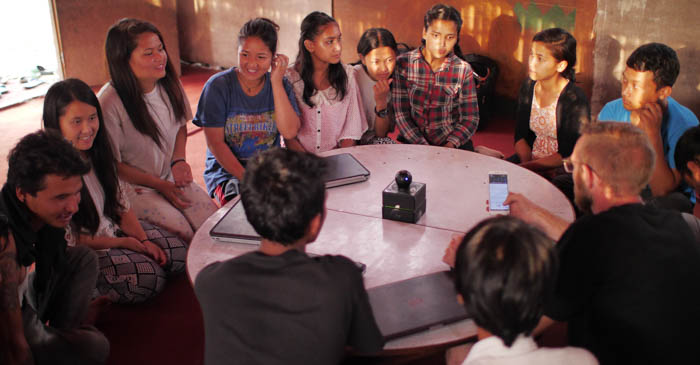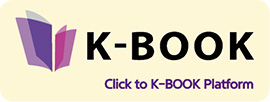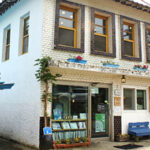Different values and meanings are created through books. Books allow us to acquire knowledge. We are also enlightened by the teachings portrayed in them, and they sometimes even set the path for our lives based on this enlightenment. However, reading regularly by oneself is easier said than done. Furthermore, reading books on a broader spectrum than what one’s interested in is something even more difficult to do. More and more people have been reading and having discussions within book clubs all around. There are people who take a further step and pursue positive development by planning a variety of events and taking part in a society with reading as a medium. They want to achieve positive development through various activities and playing social roles by using the act of reading. This refers to creating book communities. Book communities mostly start as book clubs and have the purpose of existing under a stronger connection while having good influences on society through deeper thoughts and roles and sharing tastes and different lives. Let’s take a look into the book communities that branch out in various ways with their unique characteristics.
Reading That Creates a Safe Connection Between People
Lee Hwa-Jeong, who plays many roles as a book coordinator and published the books, Reading for All (The One Books), Reading and Shining Together as Book Coordinators (Bookbee), A Beautiful Journal Collection (Book Cloud Publisher), runs a variety of book communities. These book communities serve different purposes based on the preferences and the will of the people who join her in those book communities. Lee Hwa-Jeong started the book communities with a couple of people who joined her with the same goal of “having good influence that shines by sowing seeds of books every day.” After that, more and more people joined, and as a result, there now are a total of six book communities.

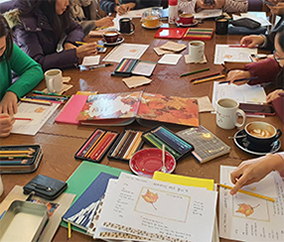

“Sunhyang Book Club”, “Twinkling Calendar Club”, “Book Coordinator Training Club” (L to R)
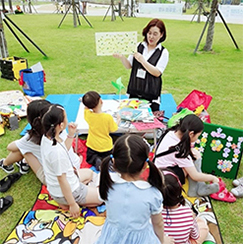

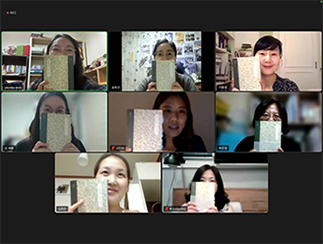
“Picture Book Club”, “Theme Book Club”, “Online Book Club” (L to R)
Seven years ago, The “Sunhyang Book Club” marked the start of the development of book communities, and its members consist of housewives who read one book per month and spread the act of reading to their children and husbands. By reading books together, they are finding their places in society as more than just housewives. This community has also attracted people who do not have the habit of reading books. “Cheo-Eum Book Club” is a monthly club that is three years old, and its members include people from the United States, Gyeonggi-do Province, Busan, and Jeolla-do Province. The club covers a variety of genres, including classics, science, history, novels, storybooks, poems, etc., and members also share copied pictures and recital files. Members of the “Twinkling Calendar Club” form connections through books as they build long-term companionships. In the club, members share assignments in a group chat twice per month and have an online meeting once per month. Every year, members decide a theme, and as an example, last year’s keyword was “poems,” which means that the club read collections of poetry all year long. This year’s keyword is “trees,” which means this year’s content will include poems, novels, movies, documentaries, picture books, and science books about trees. “Fifties’ Book Club” consists of members who aim to grow older as fantastic role models for younger people through reading and sharing stories from books they have absorbed in their lives. The members of “Poetry Club: Let’s Get Honey” recite and transcribe poems as well as enjoy them in a variety of ways through picture books, storybooks, and movies. Both of these communities carry out activities that connect and strengthen the lives of one another through reading. There also is a program led by Lee Hwa-Jeong, an active book coordinator, that trains potential book coordinators. The book coordinator program consists of members who aim at refining and looking after their lives through books. The program serves its purpose as it is divided into the following categories: moms, book stores, book clubs, and writing.
“Book communities all have different characteristics. Some communities have regular meetings and feel a sense of community through emotional connections by communicating through books in social networks. While there are some exclusive communities, there also are communities that focus on public activities. For me, the ideal book community is a community with people who believe that reading is an ”important part“ of their lives. I want to have a minor yet good influence on others by becoming a person who has a strong and healthy influence on what’s near me in my life in a book community where people read, write, and share.”
The message from the book coordinator and leader of many book communities, Lee Hwa-Jeong, pertains to the vital life created by reading books together.
For a Sustainable Community Where People Share Tastes Through Books
Lee Sun-Kyeong of “Choco Book Cafe” created a book community as the first step to create a space that provides people comfort in a generation where people face struggles in their lives.
“A community can be created by people with the same purpose, but sometimes, it is also created naturally from some kind of occurrence. We naturally met through reading, and now, we are able to share our thoughts comfortably. We provide comfort for one another in times of loneliness and hardship and share joy when there’s something to be happy for.”
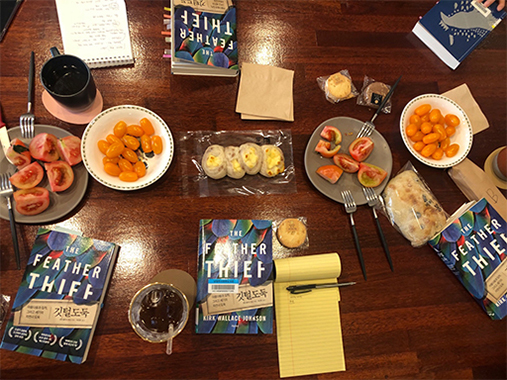
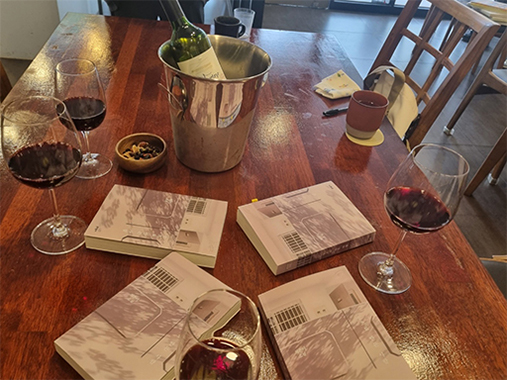
Image of the “Risky Book Club”
Instead of adding a significant modifier and setting a big goal, the club took the first steps as it developed a bond between people by allowing them to share personal preferences and communicate through reading. Every Saturday at 11, book meetings are held with members from their twenties to sixties who share similar preferences for books. Also, there are events in which members eat out or have snacks together in a bookstore. In addition, members choose movies, plan parties and lectures, and even give lectures or cooking lessons. The club’s members also started to write magazines together with the same purpose as the meetings continued. It started as a small club and went on to produce new cultural content as it developed as a community. The new magazine with the same name as the community, the Risky Book Club, is funded by the Art Masulso, a community art establishment. The community members are putting a lot of affection and passion into this year’s issue as well. The magazine’s publication is the result of pride in the community, which makes it much more valuable and meaningful. It is now the source of sustainable growth for the “Risky Book Club,” which got its name from the members’ uncertainty of how long the community might last. It was an unexpected result from its members reading books together while going on with their lives.
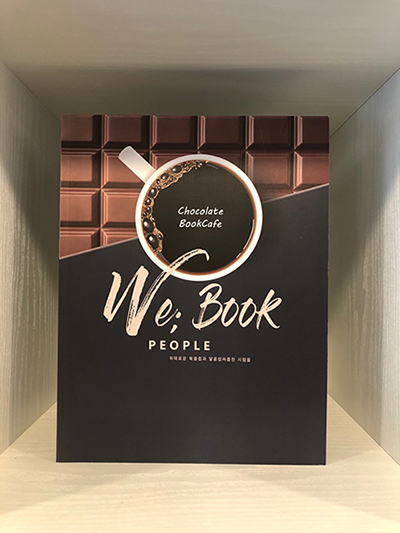
The Risky Book Club Magazine
Participation of the Local Government in the Activities of Book Communities
The local government of Paju-si, where the greatest publishing complex of Korea is established, is running a project to support book communities. The “2021 Book Community Funding Project,” which is the title of the project, serves the purpose of creating environments where people voluntarily read and establishes a Paju-si full of readers through the revitalization of book clubs that form the basis for local residents to read books. Book clubs within schools, public, small, and military libraries, book communities based in local bookstores, book clubs in the workplace, book communities based in community education centers (ones that use education centers when they are empty, local community education centers where locals learn and share through educational activities) in Paju-si will be funded. Communities that apply for the fund will go through an evaluation process and receive funds for books, lectures, consumable supplies, promotion/printing, field trips/hands-on activities, and more.
In Nowon-gu, Seoul, there’s a project called “Book Momo” that funds book communities. It supports book communities with the motto, “Read together, talk together, and live together!” It has a program for leaders and provides a center for public opinion until the end of the year. Moreover, the project selects 40 Book Momo teams and funds 500,000 won for each team for book purchases and reading activities. This year, in particular, it designated a librarian for each of the book communities in public libraries and funds community activities by using the libraries’ infrastructure and content. Nowon-gu anticipates that reading and sharing thoughts will become the basis of development for town communities.
Book communities in Korea continue with positive development through a variety of activities and play social roles through reading.
In addition, small and big book communities are playing active roles all around Korea. “Namwon Book Club” in Jeju shows a new possibility by selling regional products and being a guest house by establishing ‘Living in Jeju,’ a local business. It started as a book club for reading and developed into a Seogwipo Return Farm Cooperative. The “Boryeong Village of Readers,” now leading the famous “Boryeong Literature Festival” that attracts people nationwide with its lectures, also started as a book club of best friends. The members of this community aim to create a book community that lasts for generations and have been actively participating for years while maintaining their identity as a community. There is also a book community that focuses on performing social responsibilities through roles. The “Joy of Reading Books” in Gimhae is a book club established by local government employees that started with the purpose of creating a city full of readers and provided an opportunity for really listening to the voices of locals.
Book communities have their unique identities and are growing. They show the power of books and the importance of togetherness in setting out into the world where we live together and yield a variety of social values.
Written by Kim Young-Ihm
